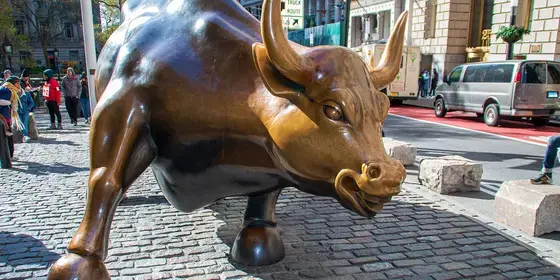Like most things in the natural world, investment markets are cyclical. Just as seasons change, the investment markets also cycle through periods of rising and declining value.
Though it’s never fun to watch your investments drop in value, it's important to remember that periods of volatility are normal. Unfortunately, many investors forget about the cyclical nature of the markets, so significant downturns—like the ones we're experiencing now—seem even more frightening and cause people to act drastically.
Since many factors contribute to these market cycles, it's impossible to predict how long a process will last. But it can be beneficial to understand the market cycles so you can be better prepared to make informed decisions.
Differences Between Bear vs. Bull Markets
Talk of bull markets and bear markets often dominate financial headlines, as we constantly cycle between the two market environments. But how does that cycle work, exactly? For the answer to that question, let’s recap the bears and the bulls.
Bull Market
A 'bull market' is the name given to an investment market in which prices are rising or expected to increase over an extended period. The commonly accepted definition of a bull market is when prices increase by 20% or more after two separate declines of at least 20% each.
In this type of market, the economy is thriving. Unemployment is low or declining, and while there may be periodic downturns, they're minor in the grand scheme of things, and the market continues an overall upward trend. Analysts who are "bullish" have an optimistic view of how investments are performing or will perform. Generally, things are going well.
Bear Market
By contrast, a 'bear market' is the name given to an investment market where prices drop or are expected to drop over an extended period. The commonly accepted definition of a bear market is when prices fall by 20% or more from a recent high.
In this type of market, the economy is receding. Unemployment may rise, and while there may be periodic upswings, they aren't significant enough to trigger the market to turn back over to bull territory. Analysts described as "bearish" have a pessimistic view of how investments are performing or will perform.
However, just because there’s a downturn—even a sustained downturn—doesn't mean you should act drastically. Remember, it must meet specific criteria to be considered a bear market.
Bear Market vs. Correction vs. Pullback
When the markets decline, people get anxious. However, we must consider the severity of these selloffs. Just because there’s a market downturn doesn’t automatically mean we're heading into bear territory. Depending on how significant the decline is, it could just be a pullback or a correction.
Pullback
A pullback is a market drop of 5–10%, typically happening in a short period. It's usually just a dip from a recent high and does not affect the continuous upward trend of the bull market in which it exists. Pullbacks are normal parts of the market cycle and shouldn't be viewed as a harbinger of dark days to come.
Correction
A correction is when the market drops 10–20%, and this period can last a few months. Corrections usually exist in times of volatility. Though they make investors anxious, they can also signify a watershed moment for markets: After three or four months, the markets could pick up again, or they could decline even further, at which point they may decline into bear territory.
While more significant than a pullback, a correction isn’t necessarily a sign that a bear market is looming. In fact, since 1974, there have been 24 market corrections, and only five of them turned into bear markets.
Does a Bear Market Mean Recession?
All this talk about bear markets and declines leads to the question of what happens when a bear market is sustained over a long enough period of time? Could it lead to a recession?
The answer is that a bear market doesn’t always lead to a recession. However, it can signify that one is potentially on the way.
The National Bureau of Economic Research (NBER) defines a recession as a significant decline in economic activity spread across the economy, lasting more than a few months, and normally visible in real GDP, real income, employment, industrial production, and wholesale-retail sales.
A recession is a significant decline across the entire economy. Meanwhile, bear markets only deal with the investment markets. Since investment markets are obviously a part of the economy, the two are linked. But just because the markets are down doesn’t necessarily mean other factors like real GDP or employment are also down.
It’s All Cyclical
Though these times can be challenging, it’s important to remember that brighter days are ahead. Since the Industrial Revolution, the economy has generally trended upward—this also goes for investment markets. While there are periods of decline, overall, the markets are growing, as seen in Figure 1.
Figure 1. S&P 500 Index Performance Over Last 50 Years

Source: Wealth Enhancement Advisory Services
Despite the current bear market, historical data—and the cyclical nature of markets—shows us that the markets will recover. Looking at Figure 2 below, bear markets usually last an average of just 14 months before returning to bull territory.
Figure 2. Average Length and Return of Bull vs. Bear Markets Since 1950

While seeing how your investments perform in a bear market can be distressing, historically, markets have always rebounded. There are even planning opportunities you can take advantage of in a bear market to better position your portfolio for the return to bull territory.
Since this is a time of uncertainty for many, you probably have questions. Reach out to an advisor today to learn more about market cycles and what you can do to better prepare for each phase in the cycle.



